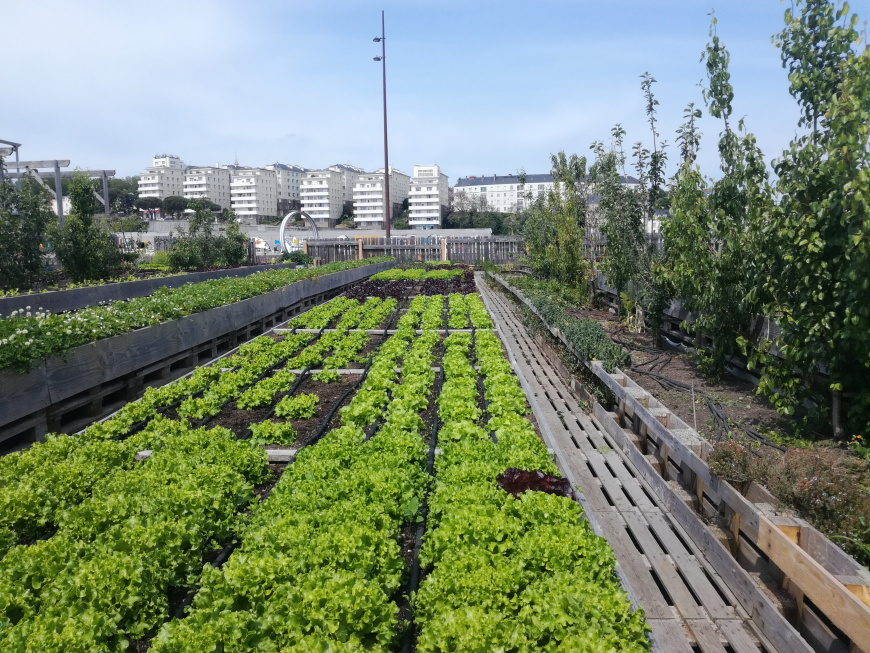Top Guidelines Of City Blooming
Table of ContentsThe Of City BloomingCity Blooming Things To Know Before You Get ThisThings about City BloomingCity Blooming Fundamentals ExplainedThe Greatest Guide To City Blooming
Fascinated in growing food for sale in the City of Chicago? Below is a list of often asked questions pertaining to the guidelines and policies that farmers need to consider when planning a metropolitan agriculture task.
The zoning change does not customize any type of other codes taking care of composting, structure authorizations, acquiring or leasing City had building, service licenses or environmental contamination. There are existing codes that manage these problems and they continue to be completely result and might apply to your task. Neighborhood yards are typically possessed or handled by public entities, civic companies or community-based companies and preserved by volunteers.
Urban farms expand food that is planned to be sold, either on a not-for-profit or for-profit basis. Due to their industrial function, metropolitan ranches call for a service permit.
What Does City Blooming Do?
Composting is permitted but only for plant material that is produced and used on website. The amount of compost material can not go beyond 25 cubic lawns at any given time according to the criteria in 7-28-715 of the City's Municipal Code. Yes. Due to the fact that the soil at most brand-new yard sites needs changing, compost, dirt, timber chips, or various other products can be obtained to build or boost the expanding area - garden care.

If a building permit is required then the hoophouse will certainly be considered an accessory structure. You can discover even more about the building permit demands by getting in touch with the Department of Structures. The 25,000-square-foot dimension limitation is planned to stop a single community yard from dominating an offered block or interfering with the block's existing property or industrial personality.
The restriction does not relate to gardens found in Public Open Space (POS) districts. Can there be greater than one area yard that is 25,000 square feet on a solitary block? Yes. The dimension restriction applies to individual yards, not to specific blocks. No. Secure fencing is not needed, nevertheless, gardens that have huge car parking areas may be called for to install secure fencing or other landscape design features.
City Blooming Things To Know Before You Buy
B1 & B2 districts require that all commercial use activities be conducted inside. Is fencing required for city ranches? Fencings may be required, along with landscape design and screening, for specific car parking locations and outdoor job or storage areas depending on location and the details activity taking location.
Yes. Urban ranches call for structure licenses and zoning authorizations prior to building and construction. Other types of city evaluation might be needed depending upon details frameworks, activities, size, landscape design, licensing, public heath and stormwater monitoring issues. Several of these requirements are identified in the project design or permitting process, nevertheless, the applicant might be liable to separately determine particular licenses or permits that may be called for.
The Division of Service Affairs and Consumer Security can assist establish the click over here now certain type of service license that's called for. Off street vehicle parking is required for the majority of industrial projects in Chicago. The needed number of vehicle parking rooms is based on the number of employees working on site and not the square video footage of the expanding area.
Some Ideas on City Blooming You Need To Know

A metropolitan ranch can offer compost material generated on website, nevertheless, the operation needs to abide with the regulations in 7-28-715 of the Chicago Municipal Code. Aquaponic systems are enabled indoors on city ranches in lots of zoning districts.
Approximately five hives or swarms of honey bees might be kept as an accessory use. Beekeepers need to register with the Illinois Division of Farming. For even more info concerning the recommended zoning modification you may speak to the Division of Housing and Economic Development, Bureau of Preparation and Zoning at 312.744.8563.
Farming in cities and city locations An urban ranch in Chicago. Urban farming refers to numerous methods of growing. https://ameblo.jp/cityblooming/entry-12857756993.html, processing, and dispersing food in urban areas. The term also uses to the area activities of animal husbandry, tank farming, beekeeping, and cultivation in a city context. Urban farming is distinguished from peri-urban agriculture, which takes place in backwoods at the side of residential areas.
The Buzz on City Blooming
, that seek to develop social networks started on a shared ethos of nature and neighborhood holism. These networks can create by means of official institutional assistance, becoming incorporated into regional town planning as a "transition community" motion for lasting city growth.
Some of the very first proof of city farming comes from Mesopotamia.